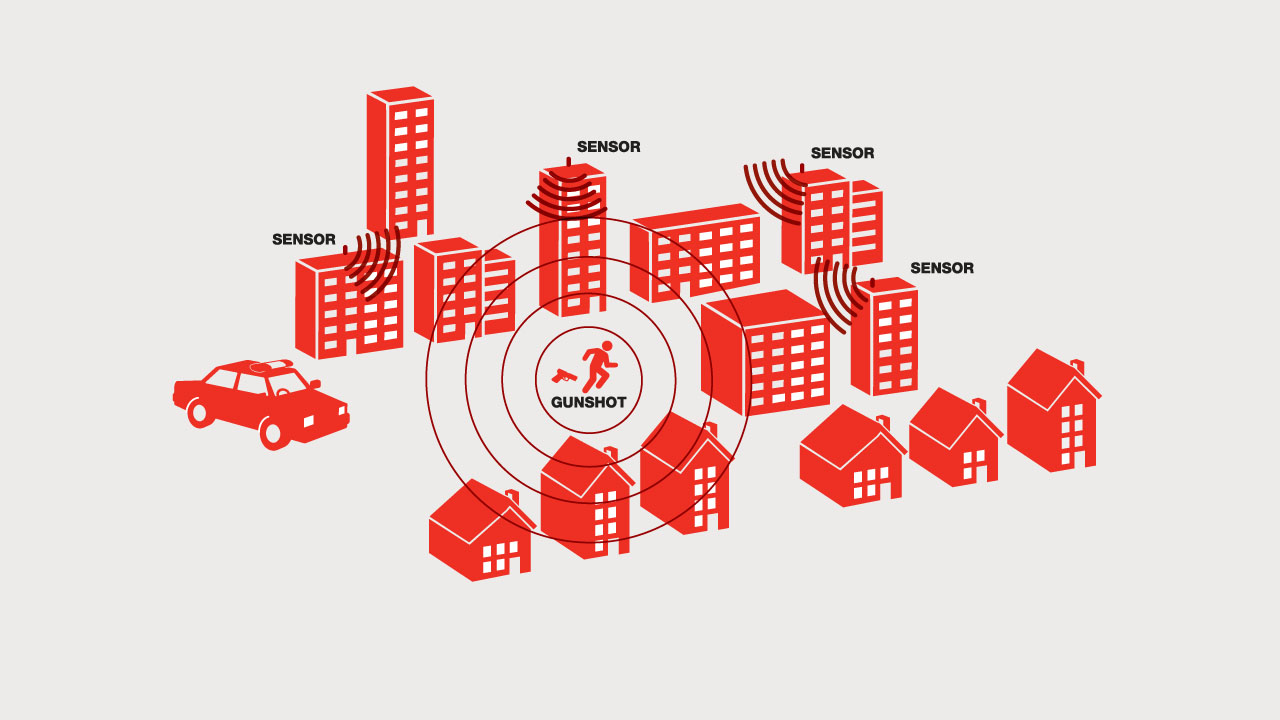ShotSpotter, the gunshot detection system introduced in New York City last week, is the NYPD’s newest high-tech tool against against gun violence. It comes with a lot of promise, primarily from one of its main proponents, Mayor Bill de Blasio, who campaigned with a pledge to bring gunshot location technology to the city. “This new gunshot detection system is going to do a world of good in terms of going after the bad guys in this town,” de Blasio said as he announced a pilot program that placed ShotSpotter in 17 precincts in Brooklyn and the Bronx.
While de Blasio sounds like he’s praising a superhero rather than a detection system based on microphones, some argue that ShotSpotter’s crime-fighting capability — originally designed for the military as an anti-sniper weapon — comes with negative side effects. Like most law enforcement initiatives that inspire opposition, the collateral damage relates to the rights of suspects, particularly bringing up some entanglements with warrantless search and seizure laws.
The civil liberties organization Electronic Frontier Foundation has raised concerns about the system’s ability to record people’s voices. “It’s documented, and it highlights exactly what kinds of concerns we have. The capability of ShotSpotter to record voices should be a huge issue wherever it is deployed, and yet it is hardly discussed,” said Nadia Kayyali, a lawyer who works as part of the EFF’s activism team.
This feature triggered privacy alarms during a fatal shooting in Oakland, California. The incident, which happened in 2007, resulted in the conviction of Arliton Johnson, whose nickname was uttered in his victim’s dying words. “Oh, R,” the victim, Tyrone Lyles, said in the ShotSpotter recording. “Why you done me like that, R? R, why you do me like that, dude?” Johnson was found guilty of second-degree murder and was sentenced to 64 years in prison.
Ralph A. Clark, the CEO of Shotspotter, said that the Johnson case was an “extremely rare” occurrence. “The person that was killed was standing underneath one of our sensors and was able to shout out very loudly,” he said.
To address concerns, Clark said that his company instituted changes to their privacy policy three years ago. “What we do now with our privacy policy, we only make available the audio two seconds before gunshot and three seconds after gunshot. That’s it,” he said.
“Those situations, and even prior to making that change, the instances of us hearing people screaming and yelling that would potentially be used in a case is extremely, extremely rare…It just doesn’t happen that people are screaming within that very short window of time where our sensors can detect.”
Clark agreed that the five seconds of audio is enough time to incriminate someone, thus bringing up some issues relating to overreach of police surveillance. However, he defended his company’s record by saying that privacy advocates repeatedly point to just three cases (two in Oakland and one in New Bedford, Massachusetts) where ShotSpotter recordings were relevant to criminal cases. “It’s very, very rare, like three out of cumulatively half a million gunshots,” he said.
Kayyali said that there is a case for preventing police from admitting ShotSpotter recording into evidence. The main argument is that it constitutes a warrantless search, something that is prohibited under the Fourth Amendment.
“Fitting any new technology into existing jurisprudence is difficult. If this were challenged in court, the issue would most likely be whether there’s a reasonable expectation of privacy in the conversations that are recorded. And there is an argument to made that there is, depending on the specific circumstances.”
(Image: ExtremeTech)



